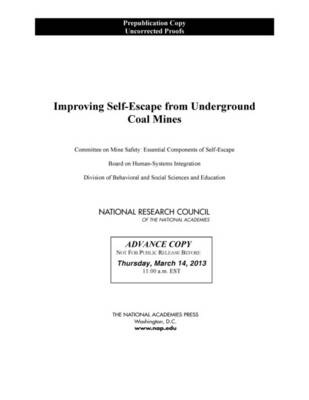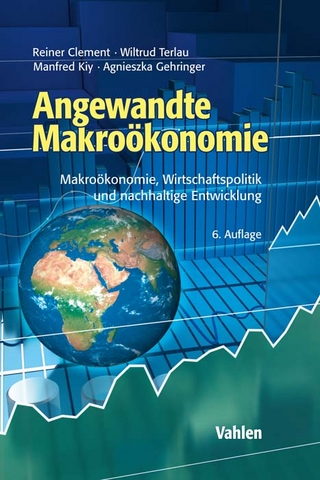
Improving Self-Escape from Underground Coal Mines
Seiten
2013
National Academies Press (Verlag)
978-0-309-28276-5 (ISBN)
National Academies Press (Verlag)
978-0-309-28276-5 (ISBN)
Improving Self-Escape from Underground Coal Mines (2013)
Coal mine disasters in the United States are relatively rare events; many of the roughly 50,000 miners underground will never have to evacuate a mine in an emergency during their careers. However, for those that do, the consequences have the potential to be devastating. U.S. mine safety practices have received increased attention in recent years because of the highly publicized coal mine disasters in 2006 and 2010. Investigations have centered on understanding both how to prevent or mitigate emergencies and what capabilities are needed by miners to self-escape to a place of safety successfully. This report focuses on the latter - the preparations for self-escape.
In the wake of 2006 disasters, the U.S. Congress passed the Mine Improvement
and New Emergency Response Act of 2006 (MINER Act), which was designed to strengthen existing mine safety regulations and set forth new measures aimed at improving accident preparedness and emergency response in underground coal mines. Since that time, the efforts of the National Institute of Occupational Safety and Health (NIOSH) and the Mine Safety and Health Administration (MSHA) have contributed to safety improvements in the mining industry. However, the Upper Big Branch mine explosion in 2010 served as a reminder to remain ever vigilant on improving the prevention of mine disasters and preparations to help miners survive in the event of emergencies.
This study was set in the context of human-systems integration (HSI), a systems approach that examines the interaction of people, tasks, and equipment and technology in the pursuit of a goal. It recognizes this interaction occurs within, and is influenced by, the broader environmental context. A key premise of human-systems integration is that much important information is lost when the various tasks within a system are considered individually or in isolation rather than in interaction with the whole system. Improving Self-Escape from Underground Coal Mines, the task of self-escape is part of the mine safety system.
Table of Contents
Front Matter
Summary
1 Introduction
2 Mine Safety Regulations and Practices
3 Understanding Self-Escape
4 Decision Making
5 Safety Culture
6 Training
References
Appendix A: Regulations Relevant to Self-Escape
Appendix B: Mine Accident, Injury and Illness Report
Appendix C: Biographical Sketches of Committee Members and Staff
Coal mine disasters in the United States are relatively rare events; many of the roughly 50,000 miners underground will never have to evacuate a mine in an emergency during their careers. However, for those that do, the consequences have the potential to be devastating. U.S. mine safety practices have received increased attention in recent years because of the highly publicized coal mine disasters in 2006 and 2010. Investigations have centered on understanding both how to prevent or mitigate emergencies and what capabilities are needed by miners to self-escape to a place of safety successfully. This report focuses on the latter - the preparations for self-escape.
In the wake of 2006 disasters, the U.S. Congress passed the Mine Improvement
and New Emergency Response Act of 2006 (MINER Act), which was designed to strengthen existing mine safety regulations and set forth new measures aimed at improving accident preparedness and emergency response in underground coal mines. Since that time, the efforts of the National Institute of Occupational Safety and Health (NIOSH) and the Mine Safety and Health Administration (MSHA) have contributed to safety improvements in the mining industry. However, the Upper Big Branch mine explosion in 2010 served as a reminder to remain ever vigilant on improving the prevention of mine disasters and preparations to help miners survive in the event of emergencies.
This study was set in the context of human-systems integration (HSI), a systems approach that examines the interaction of people, tasks, and equipment and technology in the pursuit of a goal. It recognizes this interaction occurs within, and is influenced by, the broader environmental context. A key premise of human-systems integration is that much important information is lost when the various tasks within a system are considered individually or in isolation rather than in interaction with the whole system. Improving Self-Escape from Underground Coal Mines, the task of self-escape is part of the mine safety system.
Table of Contents
Front Matter
Summary
1 Introduction
2 Mine Safety Regulations and Practices
3 Understanding Self-Escape
4 Decision Making
5 Safety Culture
6 Training
References
Appendix A: Regulations Relevant to Self-Escape
Appendix B: Mine Accident, Injury and Illness Report
Appendix C: Biographical Sketches of Committee Members and Staff
1 Front Matter; 2 Summary; 3 1 Introduction; 4 2 Mine Safety Regulations and Practices; 5 3 Understanding Self-Escape; 6 4 Decision Making; 7 5 Safety Culture; 8 6 Training; 9 References; 10 Appendix A: Regulations Relevant to Self-Escape; 11 Appendix B: Mine Accident, Injury and Illness Report; 12 Appendix C: Biographical Sketches of Committee Members and Staff
| Verlagsort | Washington |
|---|---|
| Sprache | englisch |
| Maße | 152 x 229 mm |
| Themenwelt | Sozialwissenschaften |
| Technik ► Bergbau | |
| Wirtschaft ► Volkswirtschaftslehre ► Makroökonomie | |
| ISBN-10 | 0-309-28276-4 / 0309282764 |
| ISBN-13 | 978-0-309-28276-5 / 9780309282765 |
| Zustand | Neuware |
| Haben Sie eine Frage zum Produkt? |
Mehr entdecken
aus dem Bereich
aus dem Bereich
Volkswirtschaftslehre für eine sich ändernde Welt
Buch | Hardcover (2024)
De Gruyter Oldenbourg (Verlag)
44,95 €
Kompakt und prüfungsrelevant für Wirtschaftswissenschaftler
Buch | Softcover (2021)
Vahlen, Franz (Verlag)
11,90 €
Makroökonomie, Wirtschaftspolitik und nachhaltige Entwicklung
Buch | Hardcover (2022)
Vahlen (Verlag)
49,80 €


